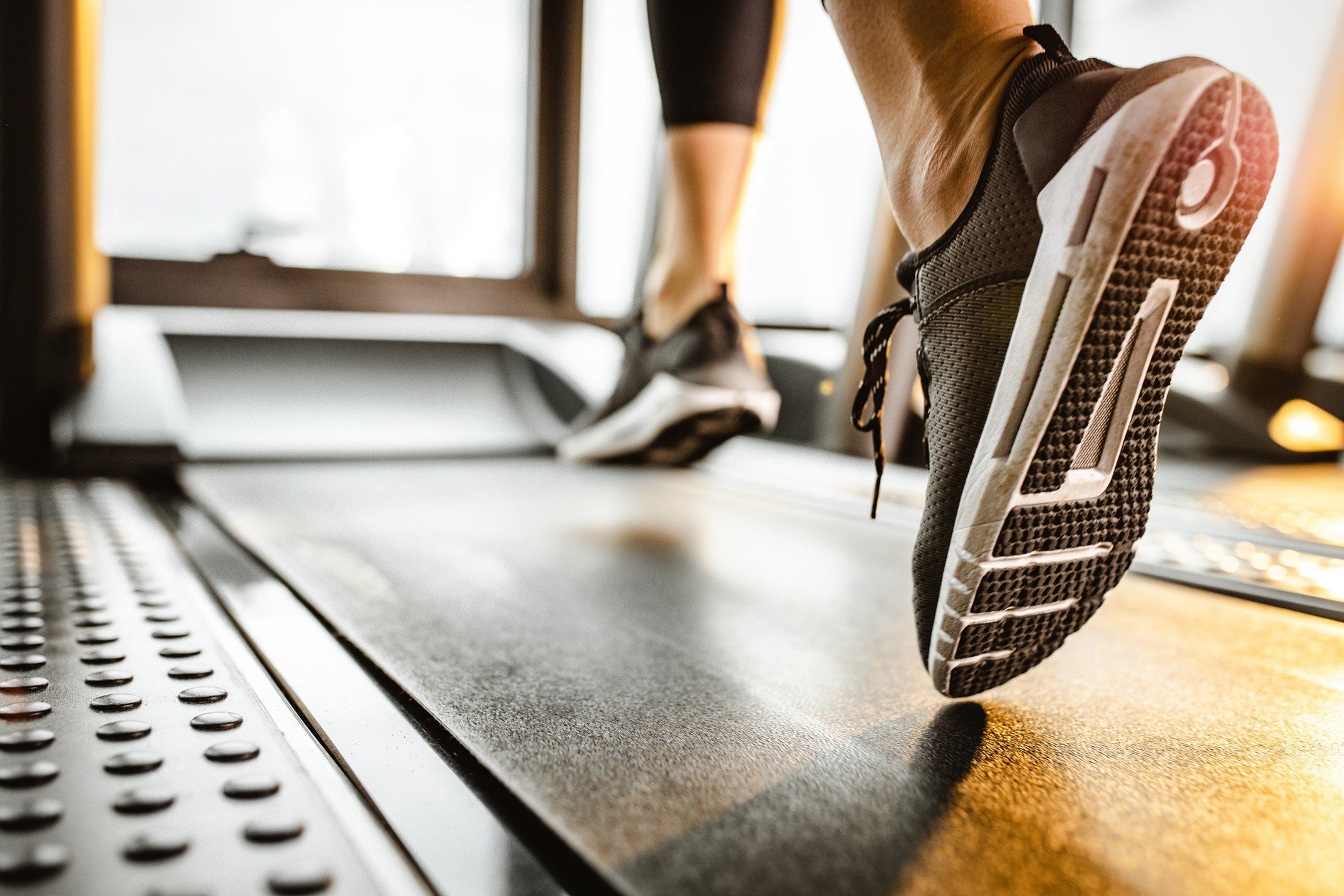


Warning: Side effects of combining diet and exercise may include increased energy, boosted confidence, and a slimmer, sexier you. If you’re ready to take control of your health and say goodbye to excess weight, this article is your golden ticket. Get ready to unlock the secrets of fat loss and embark on a transformative journey like no other!
Losing fat is an integral part of maintaining a healthy lifestyle. Excess body fat causes numerous health issues, including heart disease, diabetes, and cancer. Therefore, it’s essential to maintain a healthy weight to reduce the risk of these diseases.
However, losing weight can be challenging for many people. Various programs offer quick weight loss results with little effort, but these often lead to disappointment or harm.
Why is excess fat a health issue?
Excess body fat can put a strain on multiple systems in the body. It can impact cardiovascular health by narrowing arteries and raising blood pressure and cholesterol levels.
Additionally, extra weight puts more work on joints and bones, leading to potential pain or injury. It also increases the risk of developing type 2 diabetes as excess fat tissue impairs insulin sensitivity which aids glucose disposal in cells.
According to studies published by the National Institutes of Health (NIH), losing just 5-10% of body weight significantly improves cholesterol levels, blood sugar control, and life expectancy. Therefore it’s necessary not only for aesthetic reasons but also for long-term health benefits that require reducing excess body fat.
Why is Diet and Exercise Important for Effective Fat Loss?
Diet is essential for weight loss because it determines how many calories you consume daily. In general, consuming fewer calories than you burn will lead to weight loss as your body will start using stored fat as an energy source.
A balanced diet contains all essential nutrients required for optimal health while limiting unhealthy foods like processed foods with high-calorie content and low nutritional value. Exercise is crucial because it helps increase metabolic rate leading to more calorie expenditure which promotes higher chances of reducing excess body fat; furthermore, increased exercise increases lean muscle mass, which further increases metabolism allowing tremendous success towards reaching goals.
A Combination of Diet and Exercise is the Most Effective Way to Lose Fat.
While diet and exercise can be effective separately, combining both is the most effective way to lose fat. Studies have proven this. This combination creates a calorie deficit that forces the body to use stored fat as an energy source leading to quicker results than diet or exercise alone.
Combining diet and exercise also leads to increased muscle mass, further increasing metabolism, resulting in even more significant long-term weight loss success. Furthermore, combining both allows more room for flexibility in both areas; a balanced diet reduces unhealthy foods but still provides treat foods making it easier to adhere to. You can increase exercise by finding fun activities you enjoy without spending time in gyms.
Maintaining a healthy weight is vital as it impacts overall health significantly. While many ways promise quick weight loss results with minimal effort, combining a balanced diet and regular physical activity will lead you to long-term success.
The Role of Diet in Fat Loss
How Diet Affects Weight Loss
Regarding fat loss, diet is just as important as exercise. While exercise helps burn calories and build muscle, our foods provide the fuel and nutrients our bodies need to function correctly. To lose fat, we must create a calorie deficit by consuming fewer calories than our bodies burn.
Two ways include reduced calorie intake and increased physical activity. But it’s not just about reducing calories – the quality of those calories also matters.
Diets high in processed foods, sugar, and saturated fats can lead to weight gain and other health problems. On the other hand, diets that are rich in fruits, vegetables, lean proteins, and healthy fats can help us achieve weight loss goals while improving overall health.
Overview of Different Types of Diets
Countless diets out there claim to be the best for fat loss. Some popular ones include low-carb diets like Atkins or ketogenic diets, low-fat diets like Weight Watchers or SlimFast, plant-based diets like vegan or vegetarianism, and intermittent fasting.
Low-carb diets restrict carbohydrate intake in favor of protein and fat consumption. The idea behind this is that by limiting carbs (the body’s primary source of energy), the body will begin burning stored fat for energy instead – a process called ketosis.
Low-fat diets limit dietary fat intake to reduce the overall calorie count. These diets often promote eating more fruits and vegetables while eliminating high-calorie processed foods.
Plant-based diets emphasize whole plant-based foods like fruits, vegetables, legumes (beans), and nuts/seeds over animal products such as meat or dairy products. Intermittent fasting involves restricting food intake for specific periods (such as 16 hours per day) followed by periods where you usually eat within an 8-hour window.
Benefits and Drawbacks of Each Type of Diet
Each type of diet has its benefits and drawbacks. For example, low-carb diets are effective for short-term weight loss, but they can be difficult to sustain long-term due to their restrictive nature and potential side effects like fatigue or bad breath. On the other hand, low-fat diets may reduce overall calorie intake and improve heart health but may also leave you feeling hungry or unsatisfied.
Plant-based diets reduce the risk of chronic diseases like heart disease and diabetes while promoting weight loss. However, they can be difficult for some people to follow due to restrictions on animal products.
Intermittent fasting has recently gained popularity to promote weight loss while maintaining muscle mass. However, it may not be suitable for everyone and can lead to feelings of hunger or irritability during the fasting periods.
It’s important to remember that there is no one-size-fits-all approach to dieting – what works best for one person may not work for another. Finding a sustainable eating plan that works for your lifestyle and preferences while still allowing you to achieve your fat loss goals is essential.
The Role of Exercise in Fat Loss
Regular exercise is a crucial component of any weight loss plan. It not only burns calories but also helps to build lean muscle mass, which further boosts metabolism. Different types of exercises can help with fat loss, and the choice often depends on factors such as age, fitness level, and personal preference.
Explanation of how exercise affects weight loss
When you exercise, your body burns calories to fuel your physical activity. The more intense the exercise, the more calories you burn during and after the workout.
Exercise also helps to tone muscles and build lean muscle mass. Forces use more energy than fat tissue at rest, meaning having more muscle mass can increase metabolism even when not exercising.
Overview of different types of exercises (e.g., cardio, strength training, HIIT)
Cardiovascular exercises are great for burning calories while improving cardiovascular health. Examples include running, cycling, swimming, or dancing.
Strength training exercises involve lifting weights or using resistance bands to challenge muscles and improve their tone and strength. HIIT (High-Intensity Interval Training) workouts combine short bursts of high-intensity exercise with periods of rest or low-intensity activity.
Benefits and drawbacks of each type
Cardiovascular exercises have many benefits beyond burning calories; they also help reduce stress levels and improve heart health. However, excessive cardio can lead to injury if done improperly or too often without sufficient recovery time between sessions. Strength training can be beneficial in building lean muscle mass, which boosts metabolism; however, it requires proper form during execution to prevent injury.
HIIT workouts are effective for quickly burning calories but may be too intense for beginners needing alternate low-impact versions. The type of exercise chosen should be enjoyable but challenging enough to produce results based on individual goals.
Check out “Which is better cardio or resistance training?” if you’d like to learn more.
How to incorporate exercise into the daily routine
Incorporating exercise into a daily routine is essential for successful weight loss. One way is to schedule exercise sessions simultaneously daily, making it a habit.
Another tip is to find an accountability partner or join fitness classes that offer motivation and support to achieve goals. Taking walks throughout the day between work breaks or even during leisure periods helps increase energy expenditure as well.
Adapt exercises to your preferences, age, and fitness level.
Exercise plays a significant role in weight loss, especially with diet modifications. The type of exercise chosen should depend on individual preferences, age, and fitness level.
Strength training builds lean muscle mass, which boosts metabolism, while cardiovascular exercises burn calories quickly, but HIIT workouts are also effective for burning calories rapidly. It’s important to incorporate activities into a daily routine through scheduling and finding motivational support from others so that individuals can achieve their weight loss goals faster and more effectively than simply relying on diet alone.
The Benefits of Combining Diet and Exercise
The two most important factors are losing fat, diet, and exercise. However, many still ask whether one is more important than the other. The truth is that both are equally important, and combining the two is the most effective way to lose fat.
Creating a Calorie Deficit for Weight Loss
One of the main reasons why combining diet and exercise is so effective for weight loss is that it creates a calorie deficit. A calorie deficit means burning more calories than you consume. When you eat fewer calories than your body needs, it will start to burn fat – which leads to weight loss.
Combining a healthy diet with regular exercise is the best way to create a calorie deficit. Eating nutritious foods and burning calories through physical activity can easily create a calorie deficit without feeling hungry or deprived.
An increase in Muscle Mass Leads to Higher Metabolism.
Another benefit of combining diet and exercise is that it helps build muscle mass. Strength training exercises such as weightlifting or resistance training can help build lean muscle tissue, which helps increase metabolism. Burned calories at rest (the basal metabolic rate) account for about 60-75% of total energy expenditure in most people.
Building lean muscle tissue requires energy even during rest leading to an increased basal metabolic rate (BMR). Therefore, increasing muscle mass by performing strength-training exercises will increase metabolism rates, helping maintain long-term weight loss.
Better Adherence to the Plan
A common issue many people face when trying to lose weight is sticking with their plan long enough to see results. It’s challenging when following strict diets or exercise programs and can lead to feelings of deprivation, frustration, or boredom. However, you can adjust your routine with a healthy diet and regular exercise.
Furthermore, studies show that people who combine diet and exercise are more likely to stay committed to their plan. Both components work together harmoniously, making it easier to maintain the routine and achieve desired results without feeling deprived or overwhelmed.
Flexibility in Combining Diet and Exercise
The best part of combining diet and exercise is that there’s no one-size-fits-all plan. Instead, you can tailor your diet and exercise routines to your preferences or needs. A diet rich in proteins with limited fat consumption can be beneficial with strength training exercises.
Cardiovascular exercises such as running or cycling help enhance fat loss when combined with a low-carbohydrate diet. Ultimately the combination will depend on an individual’s fitness level, body composition goals, and dietary restrictions/needs/preferences, among other factors.
Anyone can do it
When it comes to losing fat – using proper nutrition through a healthy diet and regular physical activity – will consistently deliver the best results. Although weight loss may seem daunting at first glance- incorporating small changes within a long-term strategy for change is achievable for anyone!
The Importance Of Consistency And Patience
Consistency in Diet and Exercise
Consistency is vital when it comes to losing fat through diet and exercise. Setting a workout schedule and sticking to it is essential for long-term results. Planning with meal prep helps ensure you eat healthy, nutritious meals throughout the day.
Consistent effort in diet and exercise will help create a caloric deficit necessary for weight loss. Regarding training, consistency also plays a role in building strength and endurance.
Starting a manageable routine and gradually increasing intensity over time can significantly improve overall fitness levels. Sticking to a regular exercise regime can also lead to better stress management and increased energy levels.
In terms of diet, consistency means making healthy choices daily rather than following fad diets or strict calorie-counting plans. Consistently consuming whole foods like vegetables, lean proteins, fruits, whole grains, and healthy fats can help keep you on track toward your weight loss goals while providing your body with essential nutrients.
Patience In Achieving Results
Patience is crucial when it comes to losing fat through diet and exercise. It’s common for people to become frustrated if they don’t see immediate results or if progress slows down over time.
However, making sustainable changes takes time – slow progress is still progress! It’s essential to remember that weight loss isn’t always linear – fluctuations may occur due to factors such as water retention or hormonal changes.
Don’t get discouraged by these fluctuations! Instead, focus on small victories like increased energy levels or improved athletic performance.
Maintaining realistic expectations about the rate of weight loss will also prevent you from feeling discouraged or giving up too soon. Constantly comparing yourself to others who may be achieving faster results could undermine your efforts – remember that everyone’s journey is unique.
Patience also means being kind to yourself and allowing for mistakes or setbacks. Stay calm if you slip up on your diet or miss a workout – get back on track as soon as possible.
Consistency over time will be the key to long-term success in losing fat through combining diet and exercise. Consistency and patience are critical to achieving weight loss goals through diet and exercise.
Consistent effort in both aspects of weight loss will create the caloric deficit necessary for losing fat while building essential muscle mass.
Patience is critical – maintaining realistic expectations about the rate of weight loss will prevent discouragement, while small victories can keep you motivated toward achieving your goals.
Tips For Combining Diet And Exercise For Effective
- Keep track of progress and make adjustments: It is essential to keep track of progress when combining diet and exercise. It would be best to record your weight, body measurements, and food intake. Tracking will help you understand how much progress you have made toward your goal. Moreover, it will show you where to adjust your diet and exercise routine for better results.
- Plan meals: Planning meals can help you stick to your diet plan. It will allow you to prepare healthy meals that meet your daily calorie requirements. Try creating a meal plan at the beginning of each week or day so you don’t have to scramble when it comes time to eat.
- Incorporate high-intensity interval training (HIIT): HIIT is an effective form of exercise that combines short periods of intense activity with recovery periods. Studies have shown that HIIT helps burn more calories than steady-state cardio exercises like jogging or cycling, making it an effective way to lose fat.
- Don’t skip strength training: Strength training builds muscle mass, boosting metabolism and burning more calories even at rest. Incorporate strength training exercises like weightlifting or resistance band workouts into your weekly routine as part of a balanced fitness program.
- Stay hydrated: Drinking enough water is essential during a weight loss journey as it helps maintain satiety levels and supports proper digestion, which can affect the body’s ability to lose fat efficiently.
You can do it and see results in losing weight through consistency and patience.
Losing fat requires more than just focusing on a diet or exercise alone; combining both is necessary for effective results over time. Creating a calorie deficit through a healthy diet and regular exercise routine can significantly progress your weight loss journey. Consistency and patience are critical, as results may take time but will come with time.
Following the tips above and staying committed to your goals will achieve a healthier body and overall well-being. Remember, losing fat is a lifestyle change that requires dedication, but the reward of a happier and healthier life is worth the effort.
References:
Johns DJ, Hartmann-Boyce J, Jebb SA, Aveyard P; Behavioural Weight Management Review Group. Diet or exercise interventions vs combined behavioral weight management programs: a systematic review and meta-analysis of direct comparisons. J Acad Nutr Diet. 2014 Oct;114(10):1557-68. doi: 10.1016/j.jand.2014.07.005. PMID: 25257365; PMCID: PMC4180002.
Ryan DH, Yockey SR. Weight Loss and Improvement in Comorbidity: Differences at 5%, 10%, 15%, and Over. Curr Obes Rep. 2017 Jun;6(2):187-194. doi: 10.1007/s13679-017-0262-y. PMID: 28455679; PMCID: PMC5497590.
Editor's Pick



Warning: Side effects of combining diet and exercise may include increased energy, boosted confidence, and a slimmer, sexier you. If you’re ready to take control of your health and say goodbye to excess weight, this article is your golden ticket. Get ready to unlock the secrets of fat loss and embark on a transformative journey like no other!
Losing fat is an integral part of maintaining a healthy lifestyle. Excess body fat causes numerous health issues, including heart disease, diabetes, and cancer. Therefore, it’s essential to maintain a healthy weight to reduce the risk of these diseases.
However, losing weight can be challenging for many people. Various programs offer quick weight loss results with little effort, but these often lead to disappointment or harm.
Why is excess fat a health issue?
Excess body fat can put a strain on multiple systems in the body. It can impact cardiovascular health by narrowing arteries and raising blood pressure and cholesterol levels.
Additionally, extra weight puts more work on joints and bones, leading to potential pain or injury. It also increases the risk of developing type 2 diabetes as excess fat tissue impairs insulin sensitivity which aids glucose disposal in cells.
According to studies published by the National Institutes of Health (NIH), losing just 5-10% of body weight significantly improves cholesterol levels, blood sugar control, and life expectancy. Therefore it’s necessary not only for aesthetic reasons but also for long-term health benefits that require reducing excess body fat.
Why is Diet and Exercise Important for Effective Fat Loss?
Diet is essential for weight loss because it determines how many calories you consume daily. In general, consuming fewer calories than you burn will lead to weight loss as your body will start using stored fat as an energy source.
A balanced diet contains all essential nutrients required for optimal health while limiting unhealthy foods like processed foods with high-calorie content and low nutritional value. Exercise is crucial because it helps increase metabolic rate leading to more calorie expenditure which promotes higher chances of reducing excess body fat; furthermore, increased exercise increases lean muscle mass, which further increases metabolism allowing tremendous success towards reaching goals.
A Combination of Diet and Exercise is the Most Effective Way to Lose Fat.
While diet and exercise can be effective separately, combining both is the most effective way to lose fat. Studies have proven this. This combination creates a calorie deficit that forces the body to use stored fat as an energy source leading to quicker results than diet or exercise alone.
Combining diet and exercise also leads to increased muscle mass, further increasing metabolism, resulting in even more significant long-term weight loss success. Furthermore, combining both allows more room for flexibility in both areas; a balanced diet reduces unhealthy foods but still provides treat foods making it easier to adhere to. You can increase exercise by finding fun activities you enjoy without spending time in gyms.
Maintaining a healthy weight is vital as it impacts overall health significantly. While many ways promise quick weight loss results with minimal effort, combining a balanced diet and regular physical activity will lead you to long-term success.
The Role of Diet in Fat Loss
How Diet Affects Weight Loss
Regarding fat loss, diet is just as important as exercise. While exercise helps burn calories and build muscle, our foods provide the fuel and nutrients our bodies need to function correctly. To lose fat, we must create a calorie deficit by consuming fewer calories than our bodies burn.
Two ways include reduced calorie intake and increased physical activity. But it’s not just about reducing calories – the quality of those calories also matters.
Diets high in processed foods, sugar, and saturated fats can lead to weight gain and other health problems. On the other hand, diets that are rich in fruits, vegetables, lean proteins, and healthy fats can help us achieve weight loss goals while improving overall health.
Overview of Different Types of Diets
Countless diets out there claim to be the best for fat loss. Some popular ones include low-carb diets like Atkins or ketogenic diets, low-fat diets like Weight Watchers or SlimFast, plant-based diets like vegan or vegetarianism, and intermittent fasting.
Low-carb diets restrict carbohydrate intake in favor of protein and fat consumption. The idea behind this is that by limiting carbs (the body’s primary source of energy), the body will begin burning stored fat for energy instead – a process called ketosis.
Low-fat diets limit dietary fat intake to reduce the overall calorie count. These diets often promote eating more fruits and vegetables while eliminating high-calorie processed foods.
Plant-based diets emphasize whole plant-based foods like fruits, vegetables, legumes (beans), and nuts/seeds over animal products such as meat or dairy products. Intermittent fasting involves restricting food intake for specific periods (such as 16 hours per day) followed by periods where you usually eat within an 8-hour window.
Benefits and Drawbacks of Each Type of Diet
Each type of diet has its benefits and drawbacks. For example, low-carb diets are effective for short-term weight loss, but they can be difficult to sustain long-term due to their restrictive nature and potential side effects like fatigue or bad breath. On the other hand, low-fat diets may reduce overall calorie intake and improve heart health but may also leave you feeling hungry or unsatisfied.
Plant-based diets reduce the risk of chronic diseases like heart disease and diabetes while promoting weight loss. However, they can be difficult for some people to follow due to restrictions on animal products.
Intermittent fasting has recently gained popularity to promote weight loss while maintaining muscle mass. However, it may not be suitable for everyone and can lead to feelings of hunger or irritability during the fasting periods.
It’s important to remember that there is no one-size-fits-all approach to dieting – what works best for one person may not work for another. Finding a sustainable eating plan that works for your lifestyle and preferences while still allowing you to achieve your fat loss goals is essential.
The Role of Exercise in Fat Loss
Regular exercise is a crucial component of any weight loss plan. It not only burns calories but also helps to build lean muscle mass, which further boosts metabolism. Different types of exercises can help with fat loss, and the choice often depends on factors such as age, fitness level, and personal preference.
Explanation of how exercise affects weight loss
When you exercise, your body burns calories to fuel your physical activity. The more intense the exercise, the more calories you burn during and after the workout.
Exercise also helps to tone muscles and build lean muscle mass. Forces use more energy than fat tissue at rest, meaning having more muscle mass can increase metabolism even when not exercising.
Overview of different types of exercises (e.g., cardio, strength training, HIIT)
Cardiovascular exercises are great for burning calories while improving cardiovascular health. Examples include running, cycling, swimming, or dancing.
Strength training exercises involve lifting weights or using resistance bands to challenge muscles and improve their tone and strength. HIIT (High-Intensity Interval Training) workouts combine short bursts of high-intensity exercise with periods of rest or low-intensity activity.
Benefits and drawbacks of each type
Cardiovascular exercises have many benefits beyond burning calories; they also help reduce stress levels and improve heart health. However, excessive cardio can lead to injury if done improperly or too often without sufficient recovery time between sessions. Strength training can be beneficial in building lean muscle mass, which boosts metabolism; however, it requires proper form during execution to prevent injury.
HIIT workouts are effective for quickly burning calories but may be too intense for beginners needing alternate low-impact versions. The type of exercise chosen should be enjoyable but challenging enough to produce results based on individual goals.
Check out “Which is better cardio or resistance training?” if you’d like to learn more.
How to incorporate exercise into the daily routine
Incorporating exercise into a daily routine is essential for successful weight loss. One way is to schedule exercise sessions simultaneously daily, making it a habit.
Another tip is to find an accountability partner or join fitness classes that offer motivation and support to achieve goals. Taking walks throughout the day between work breaks or even during leisure periods helps increase energy expenditure as well.
Adapt exercises to your preferences, age, and fitness level.
Exercise plays a significant role in weight loss, especially with diet modifications. The type of exercise chosen should depend on individual preferences, age, and fitness level.
Strength training builds lean muscle mass, which boosts metabolism, while cardiovascular exercises burn calories quickly, but HIIT workouts are also effective for burning calories rapidly. It’s important to incorporate activities into a daily routine through scheduling and finding motivational support from others so that individuals can achieve their weight loss goals faster and more effectively than simply relying on diet alone.
The Benefits of Combining Diet and Exercise
The two most important factors are losing fat, diet, and exercise. However, many still ask whether one is more important than the other. The truth is that both are equally important, and combining the two is the most effective way to lose fat.
Creating a Calorie Deficit for Weight Loss
One of the main reasons why combining diet and exercise is so effective for weight loss is that it creates a calorie deficit. A calorie deficit means burning more calories than you consume. When you eat fewer calories than your body needs, it will start to burn fat – which leads to weight loss.
Combining a healthy diet with regular exercise is the best way to create a calorie deficit. Eating nutritious foods and burning calories through physical activity can easily create a calorie deficit without feeling hungry or deprived.
An increase in Muscle Mass Leads to Higher Metabolism.
Another benefit of combining diet and exercise is that it helps build muscle mass. Strength training exercises such as weightlifting or resistance training can help build lean muscle tissue, which helps increase metabolism. Burned calories at rest (the basal metabolic rate) account for about 60-75% of total energy expenditure in most people.
Building lean muscle tissue requires energy even during rest leading to an increased basal metabolic rate (BMR). Therefore, increasing muscle mass by performing strength-training exercises will increase metabolism rates, helping maintain long-term weight loss.
Better Adherence to the Plan
A common issue many people face when trying to lose weight is sticking with their plan long enough to see results. It’s challenging when following strict diets or exercise programs and can lead to feelings of deprivation, frustration, or boredom. However, you can adjust your routine with a healthy diet and regular exercise.
Furthermore, studies show that people who combine diet and exercise are more likely to stay committed to their plan. Both components work together harmoniously, making it easier to maintain the routine and achieve desired results without feeling deprived or overwhelmed.
Flexibility in Combining Diet and Exercise
The best part of combining diet and exercise is that there’s no one-size-fits-all plan. Instead, you can tailor your diet and exercise routines to your preferences or needs. A diet rich in proteins with limited fat consumption can be beneficial with strength training exercises.
Cardiovascular exercises such as running or cycling help enhance fat loss when combined with a low-carbohydrate diet. Ultimately the combination will depend on an individual’s fitness level, body composition goals, and dietary restrictions/needs/preferences, among other factors.
Anyone can do it
When it comes to losing fat – using proper nutrition through a healthy diet and regular physical activity – will consistently deliver the best results. Although weight loss may seem daunting at first glance- incorporating small changes within a long-term strategy for change is achievable for anyone!
The Importance Of Consistency And Patience
Consistency in Diet and Exercise
Consistency is vital when it comes to losing fat through diet and exercise. Setting a workout schedule and sticking to it is essential for long-term results. Planning with meal prep helps ensure you eat healthy, nutritious meals throughout the day.
Consistent effort in diet and exercise will help create a caloric deficit necessary for weight loss. Regarding training, consistency also plays a role in building strength and endurance.
Starting a manageable routine and gradually increasing intensity over time can significantly improve overall fitness levels. Sticking to a regular exercise regime can also lead to better stress management and increased energy levels.
In terms of diet, consistency means making healthy choices daily rather than following fad diets or strict calorie-counting plans. Consistently consuming whole foods like vegetables, lean proteins, fruits, whole grains, and healthy fats can help keep you on track toward your weight loss goals while providing your body with essential nutrients.
Patience In Achieving Results
Patience is crucial when it comes to losing fat through diet and exercise. It’s common for people to become frustrated if they don’t see immediate results or if progress slows down over time.
However, making sustainable changes takes time – slow progress is still progress! It’s essential to remember that weight loss isn’t always linear – fluctuations may occur due to factors such as water retention or hormonal changes.
Don’t get discouraged by these fluctuations! Instead, focus on small victories like increased energy levels or improved athletic performance.
Maintaining realistic expectations about the rate of weight loss will also prevent you from feeling discouraged or giving up too soon. Constantly comparing yourself to others who may be achieving faster results could undermine your efforts – remember that everyone’s journey is unique.
Patience also means being kind to yourself and allowing for mistakes or setbacks. Stay calm if you slip up on your diet or miss a workout – get back on track as soon as possible.
Consistency over time will be the key to long-term success in losing fat through combining diet and exercise. Consistency and patience are critical to achieving weight loss goals through diet and exercise.
Consistent effort in both aspects of weight loss will create the caloric deficit necessary for losing fat while building essential muscle mass.
Patience is critical – maintaining realistic expectations about the rate of weight loss will prevent discouragement, while small victories can keep you motivated toward achieving your goals.
Tips For Combining Diet And Exercise For Effective
- Keep track of progress and make adjustments: It is essential to keep track of progress when combining diet and exercise. It would be best to record your weight, body measurements, and food intake. Tracking will help you understand how much progress you have made toward your goal. Moreover, it will show you where to adjust your diet and exercise routine for better results.
- Plan meals: Planning meals can help you stick to your diet plan. It will allow you to prepare healthy meals that meet your daily calorie requirements. Try creating a meal plan at the beginning of each week or day so you don’t have to scramble when it comes time to eat.
- Incorporate high-intensity interval training (HIIT): HIIT is an effective form of exercise that combines short periods of intense activity with recovery periods. Studies have shown that HIIT helps burn more calories than steady-state cardio exercises like jogging or cycling, making it an effective way to lose fat.
- Don’t skip strength training: Strength training builds muscle mass, boosting metabolism and burning more calories even at rest. Incorporate strength training exercises like weightlifting or resistance band workouts into your weekly routine as part of a balanced fitness program.
- Stay hydrated: Drinking enough water is essential during a weight loss journey as it helps maintain satiety levels and supports proper digestion, which can affect the body’s ability to lose fat efficiently.
You can do it and see results in losing weight through consistency and patience.
Losing fat requires more than just focusing on a diet or exercise alone; combining both is necessary for effective results over time. Creating a calorie deficit through a healthy diet and regular exercise routine can significantly progress your weight loss journey. Consistency and patience are critical, as results may take time but will come with time.
Following the tips above and staying committed to your goals will achieve a healthier body and overall well-being. Remember, losing fat is a lifestyle change that requires dedication, but the reward of a happier and healthier life is worth the effort.
References:
Johns DJ, Hartmann-Boyce J, Jebb SA, Aveyard P; Behavioural Weight Management Review Group. Diet or exercise interventions vs combined behavioral weight management programs: a systematic review and meta-analysis of direct comparisons. J Acad Nutr Diet. 2014 Oct;114(10):1557-68. doi: 10.1016/j.jand.2014.07.005. PMID: 25257365; PMCID: PMC4180002.
Ryan DH, Yockey SR. Weight Loss and Improvement in Comorbidity: Differences at 5%, 10%, 15%, and Over. Curr Obes Rep. 2017 Jun;6(2):187-194. doi: 10.1007/s13679-017-0262-y. PMID: 28455679; PMCID: PMC5497590.








